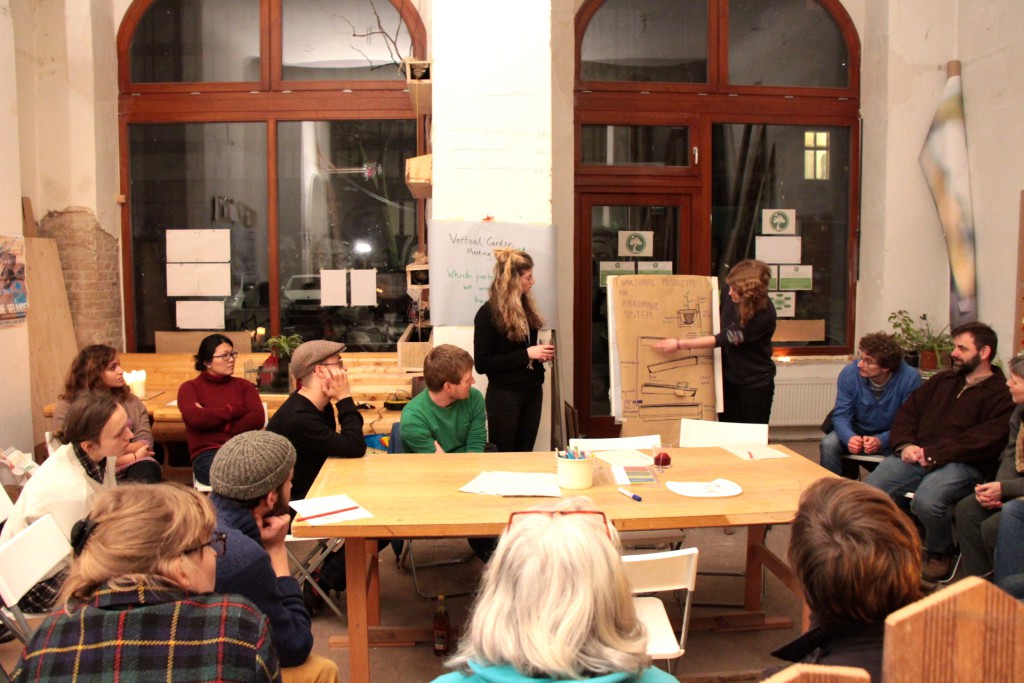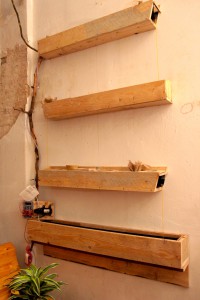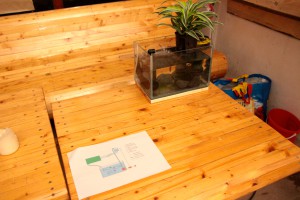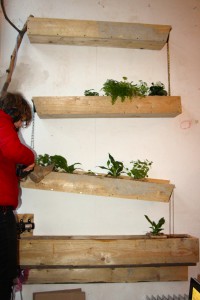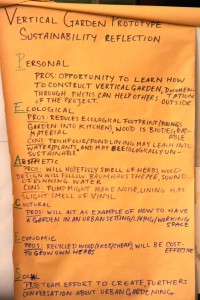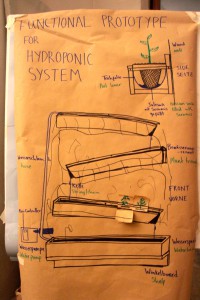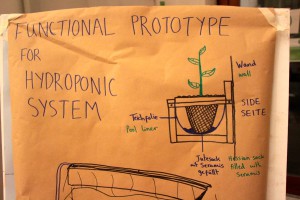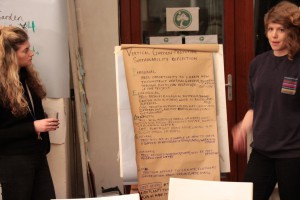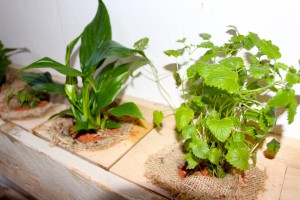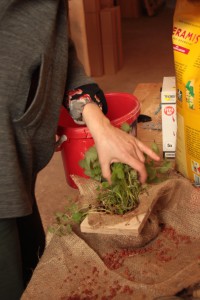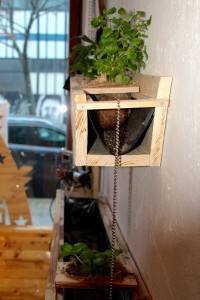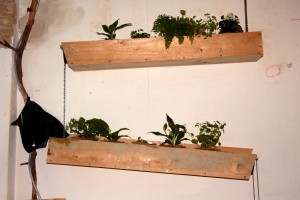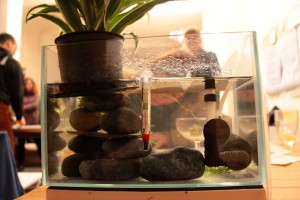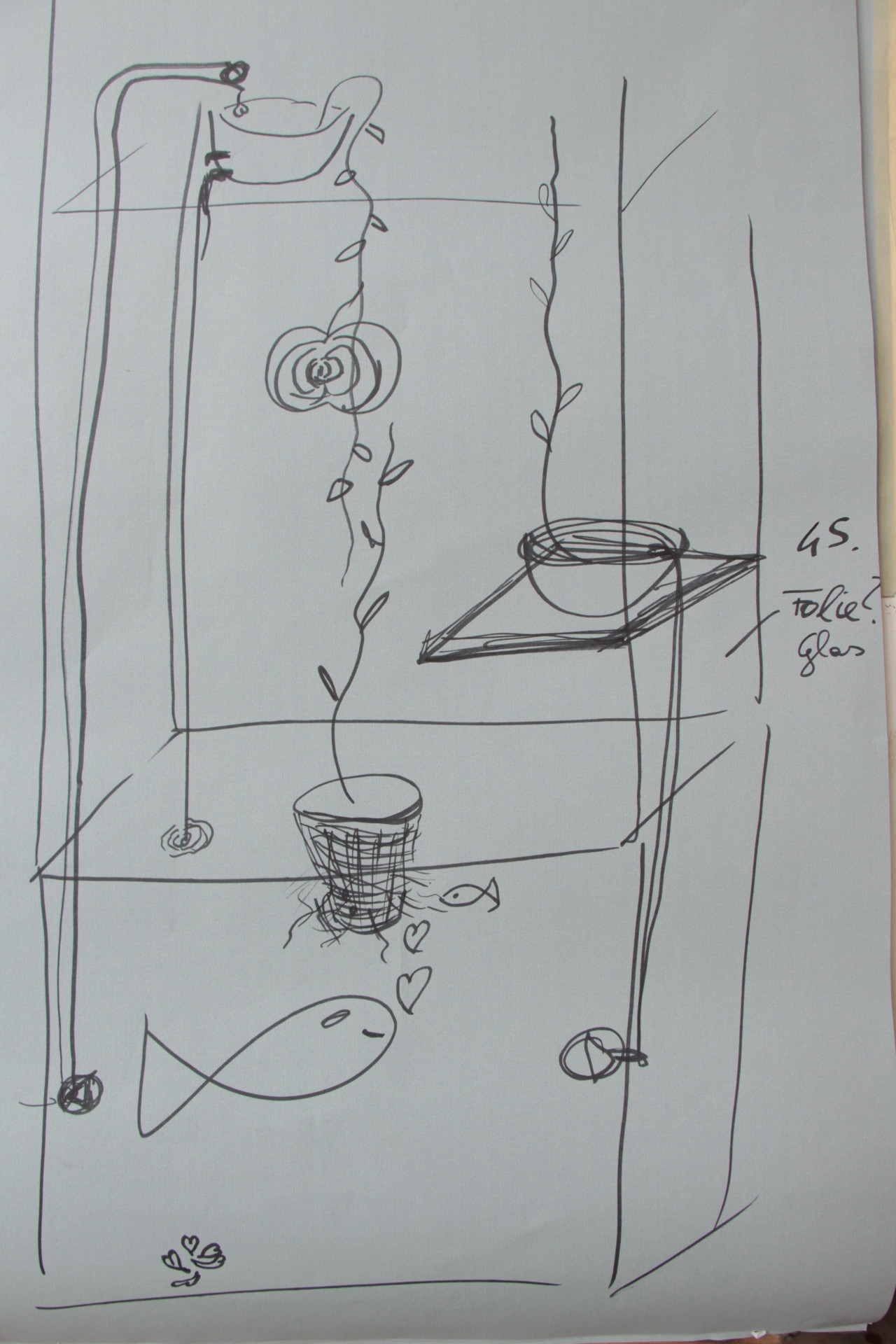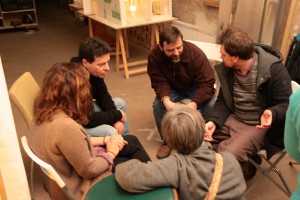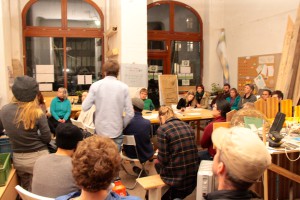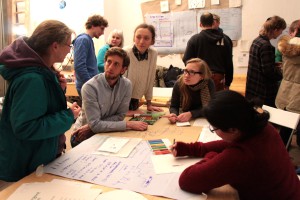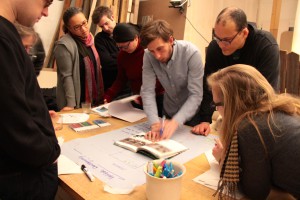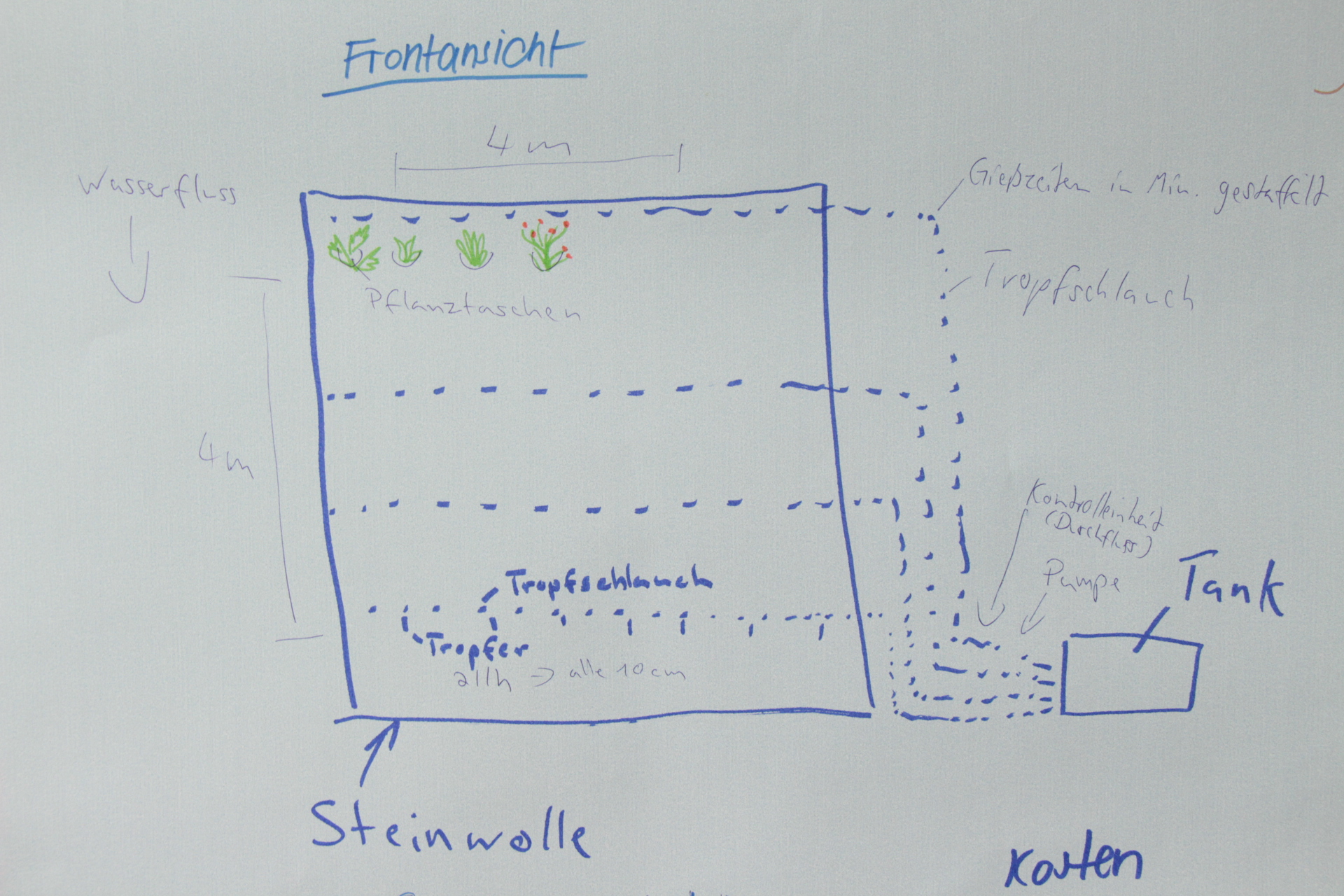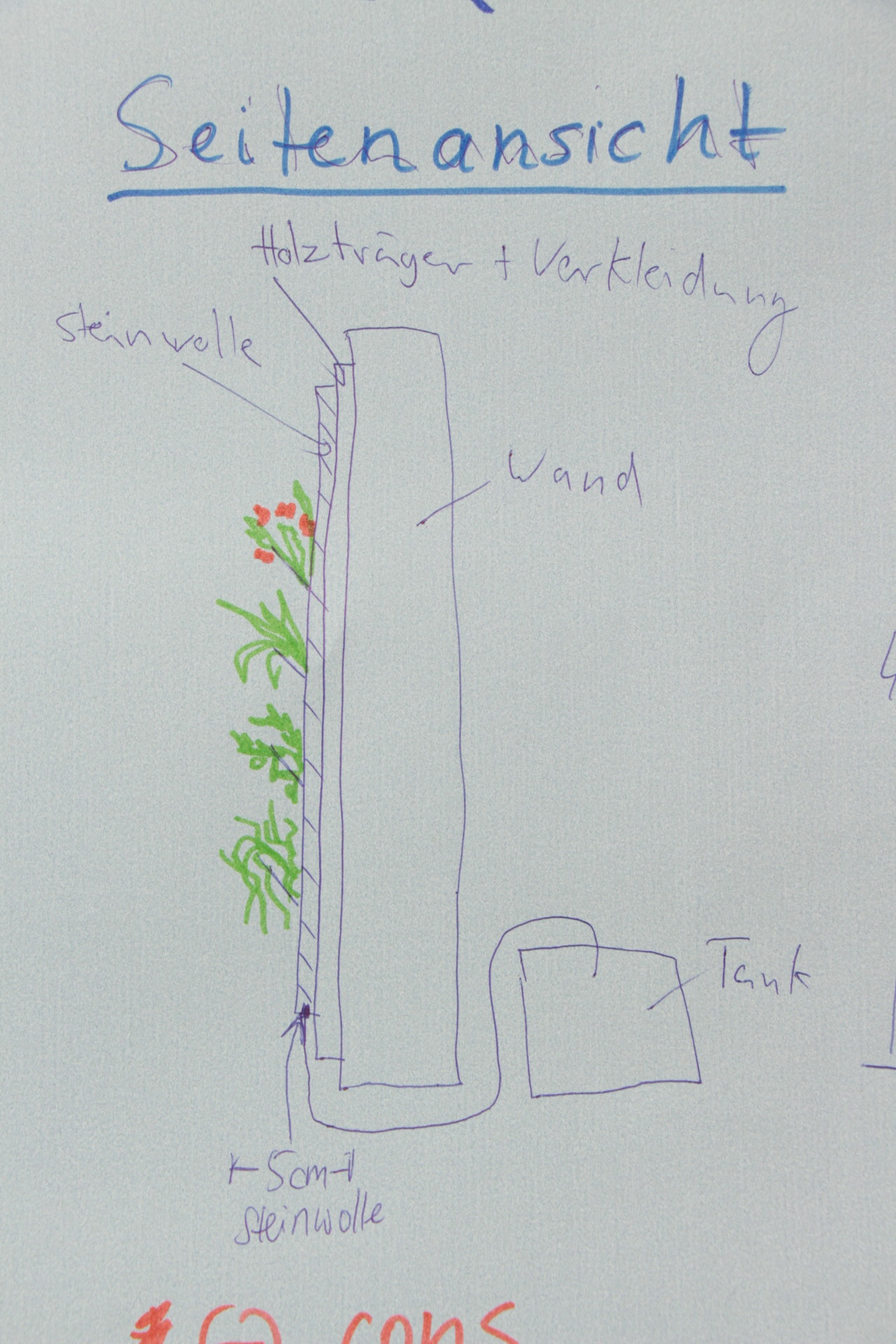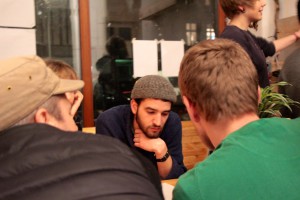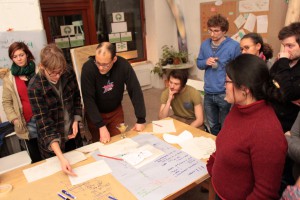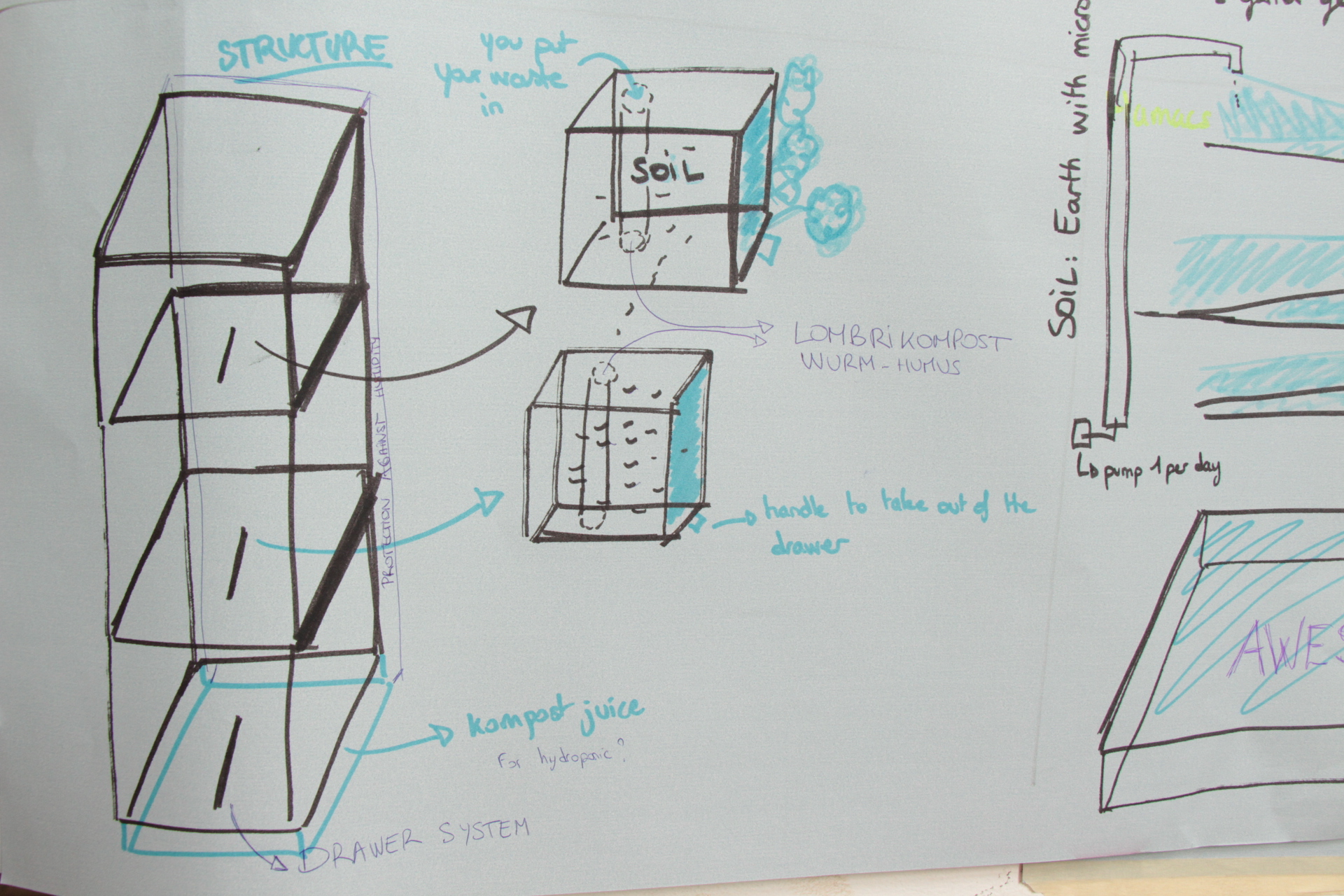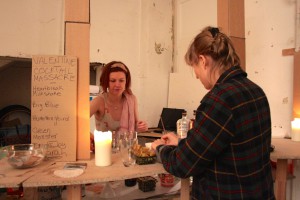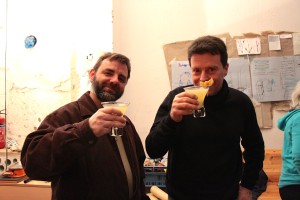[:de]Beim vierten Planungstreffen entwickelten wir weitere Prototypen. Wir haben zwei funktionelle Prototypen ausgewertet und verbessert. Unser fünftes Treffen findet am Sontag den 28. Februar von 14:00 bis 17:00 Uhr im Baumhaus statt – bringt gerne Essen und Snacks zum teilen mit. Die Teams sollten den Rest ihrer Gruppe kontaktieren, die Bestellung von Baumaterialien mit uns organisieren (baumhausberlin@gmail.com) und einen Plan des Bauprozesses vorbereiten. Wenn ihr eine Arbeitssitzung im Raum fürs Bauen von eurem Prototyp buchen möchtet, schreibt uns, um einen Zeitpunkt zu vereinbaren.
11-02-2016 – Planungstreffen #4 für den vertikalen Garten und Permakultur im Baumhaus
Bei diesem vierten Treffen setzten wir den Fokus auf die Entwicklung und die Verbesserung von Prototypen; das Treffen war insgesamt war ein gut strukturiert und effizient, und vor allem hat es viel Spaß gemacht! Etwa 25 Leute kamen vorbei und brachten jede Menge Kenntnisse, Erfahrungen und Teamgeist mit. Zusätzlich haben wir das ‚Waterfall’ Hydroponik-Konzept und das ‚Tiny Aquaponik’ System ausgewertet.
Der Abend begann mit einem entspannten Meet-and-Greet, bei dem jeder die Gelegenheit hatte, sich die zwei Prototypen vor den Präsentationen anzuschauen. Im weiteren Verlauf des Treffens hörten wir Präsentationen zum ‚Modular Compost’ Bodensystem und zum ‚Lush Jungle’ Hydroponik-System. Anschließend hat sich jedes Team über die nächsten Schritte in der Entstehung ihres Systems Gedanken gemacht und diese am Ende des Treffens mit dem Rest der Gruppe abgesprochen. Sarah (The Wedding Space) hat uns auch nochmals leckere Cocktails gemixt!
Hier, einen detaillierter Überblick von jedem System:
Das ‚Waterfall’ Hydroponik-System wurde in den letzten Tagen gebaut und ist jetzt an einer Wand vorne im Baumhausraum zu sehen. Dieses geschlossene System besteht aus einem hölzernen Wasserspeicher und drei hölzernen Bewässerungsrinnen. Das Grundprinzip dahinter ist, dass Wasser vom Speicher auf das Niveau der Konstruktion gepumpt wird und nachher durch die bepflanzten Bewässerungsrinnen wieder nach unten fließt. Die Pflanzen wurden in Jutesäcken, die mit Seramis gefüllt werden, bepflanzt. Wasser fließt durch das System und wird in die Pflanzbeutel durch die Kapillarwirkung aufgenommen. Ketten verbinden die Bewässerungsrinnen und schleusen das Wasser durch das System. Das Team hat uns erklärt wie sie den Prototyp gebaut haben und wie sie die Nachhaltigkeit des Systems beurteilen. Die Materialkosten für diesen Prototyp waren insgesamt 200€ (Wasserspeicher, Bewässerungsrinnen, Pumpe und Controller).
Der Rest der Gruppe lieferte eine Menge nützlicher Verbesserungsvorschläge: Zum Beispiel umweltfreundlichere Materialien und Solarmodule, um das System mit Strom zu versorgen. In den nächsten Wochen wird dieses Team mit den Licht- und Bewässerungsbedingungen experimentieren und das Wachstum der Pflanzen beobachten.
Im ‚Tiny Aquaponics’ Prototyp leben Schrimps und eine Pflanze zusammen in einem Aquarium, was für beide Seiten vorteilhaft ist: Die Pflanze filtriert das Wasser um für die Schrimps ein geeignetes Biotop zu schaffen, und erhält gleichzeitig Nährstoffe vom Kot der Schrimps. Während der Feedback-Sitzung wurde über eine geeignete Pumpe für diesen Prototyp diskutiert (Ram Pumpe und Tesla Pumpe). Als Nächstes wird diese Gruppe den Prototypen vergrößern, um weiter experimentieren zu können.
In unserem zweiten Hydroponik-System, dem ‚Lush Jungle’ (der üppige Dschungel) werden Pflanzen in Textilbeutel gestellt, die an die Wand getackert werden, um einen 4m² vertikalen Garten zu bauen. Die Pflanzen werden von Tropfschläuchern auf vier verschiedenen Höhen bewässert. Auf diese Weise erhalten die Pflanzen ausreichend Wasser, ohne dass die Wand feucht wird. Ein Vorschlag lautete, dass die Gruppe die Pflanzen in Pflanzschulen besorgen könnte, die normalerweise weggeworfen werden. Als nächstes erstellt dieses Team eine Liste für die benötigten Materialien und baut den Prototyp.
Das letzte System fürs Prototyping war das ‚Modular Compost’-Bodensystem, ein vertikaler Gartenturm, der auch als Wurmkompostierungssystem fungiert (Küchenabfälle werden zu Wurmkompost, der zu den besten organischen Düngern der Welt gehört!). Der Prototyp wird aus Kisten, die den Pflanzwurzeln ausreichend Raum zum Wachsen bieten, gebaut. Die Gruppe hat über alternative Naturdünger, wie Pilze und Ameisenkompost, diskutiert. Als nächstes wird das Team die Maßstäbe, in denen das System gebaut werden soll, ausarbeiten. In den nächsten Wochen wählt es Pflanzenarten und baut den Prototyp.
11-02-2016 – Vertical Garden and Permaculture Planning Meeting #4
At this fourth meeting we focussed on prototype development and improvement; it was a well-paced, fun and effective meeting. About 25 people showed up and brought along plenty of knowledge and a collaborative spirit. We evaluated prototypes for the ‘Waterfall’ hydroponics concept and the ‘Tiny Aquaponics’ system.
The evening started off with a chilled meet-and-greet, giving us a chance to get a good look at these two prototypes in advance of presentations on these systems. We heard presentations from the ‘Modular Compost’ soil system and the ‘Lush Jungle’ hydroponic system later in the meeting. Each group considered the next steps in the evolution of their system. Before the meeting ended, each group reported on their next steps to continue their prototyping process, as we sipped delicious cocktails made by the one and only Sarah from The Wedding Space.
Now for a more in-depth review of each system:
The ‘Waterfall’ hydroponic system had been built over the past few days and was now mounted on one of the front walls of the space. This is a closed system, composed of a wooden water tank and 3 wooden plant troughs. The troughs are lined with pond liner to allow water to flow though and burlap plant pouches filled with Seramis are installed in each trough. A pump sends water to the top trough, which then flows gently back down through the system. The team explained how they built the prototype and assessed how sustainable it was, as seen in the photo below.The total material costs for this prototype were 200€. This included all the materials used to make the plant troughs, tank, controller and pump.
The rest of the group offered plenty of useful suggestions for improvement, such as more ecologically friendly materials and solar panels to power the system. In the next weeks, this group will be experimenting with light and watering conditions and monitoring the growth of the plants.
The ‘Tiny Aquaponics’ prototype combines shrimps with the roots of plants in a fish tank in a mutually beneficial relationship; shrimp poop provides nutrients for the plant, whilst the plant filters the water to maintain a suitable habitat for the shrimps. In the feedback session, the group suggested a few suitable pumps for this prototype (ram pump and tesla pump). Next, this group will be enlarging their prototype and experimenting on a bigger scale!
In our second hydroponics system, the ‘Lush Jungle’, garden plants are placed in fabric pockets stapled to a waterproof wall to create a full, flat living wall. They are watered from drippers from four different heights so that plants get enough water without constantly soaking the wall. The group talked us through developments in their plans to build a 4x4m living wall. They had found a more durable alternative to rockwool, to root the plants into the system. We considered additional lighting systems to supplement natural light at the walls furthest from the windows. Another suggestion was that they source plants that would otherwise be thrown away from plant nurseries. Next up for this team, they will be drawing up a list of materials to order and building their prototype.
The last system to prototype is a ‘Modular Compost’ soil system, a vertical tower garden complete with a vermicomposting system (compost with worms and old food). The prototype will be made up of box shaped containers which will allow the plants roots ample room. Group feedback included suggestions for alternate natural fertilisers, such as mushrooms and a similar composting system with ants. Now, the team will work out the dimensions of their unit and how to use the space available in the most efficient way. They will be choosing plants and prototyping over the next few weeks.
[:]
